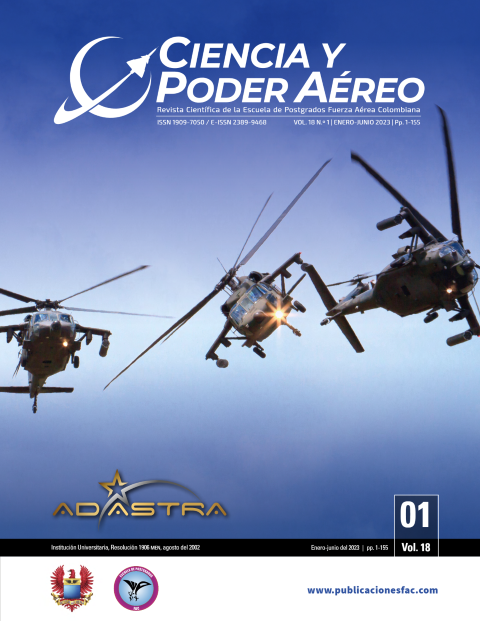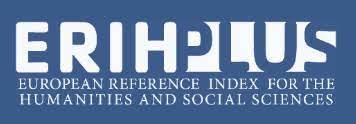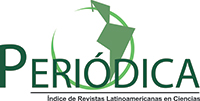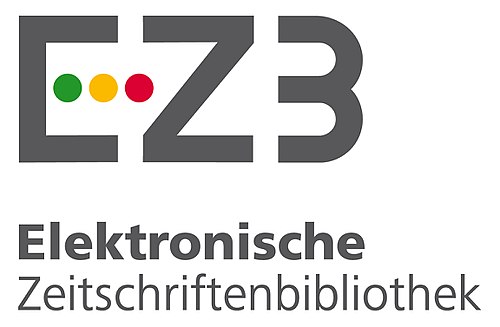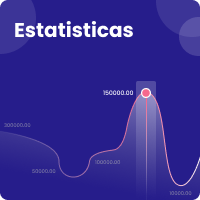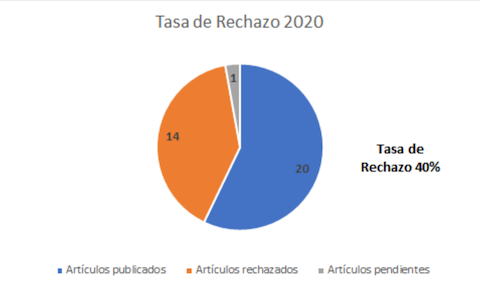Visão geral do ambiente da cabine da Estação Espacial Internacional como um análogo para missões do tipo exploração: Uma visão da medicina aeroespacial
DOI:
https://doi.org/10.18667/cienciaypoderaereo.753Palavras-chave:
Astronautas, estação espacial internacional, exposição ocupacional, fisiologia espacial, medicina aeroespacial, vôo espacialResumo
A saúde e a segurança dos astronautas em missões de exploração espacial dependem do am-biente que habitam, e a sobrevivência em ambientes extremos requer sistemas robustos que ofereçam proteção e uma atmosfera que lhes permita atuar normalmente em um ambiente hostil. É importante, portanto, compreender a estreita relação dos sistemas de suporte de vida e o impacto sobre o bem-estar daqueles que trabalham em espaços confinados com o mínimo de uso de recursos e energia.O objetivo desta revisão é descrever os sistemas de controle ambiental e de suporte de vida da Estação Espacial Internacional, e relacionar o impacto na saúde e no desempenho psicofísico dos astro-nautas se eles não funcionarem normalmente. As bases de dados Scopus, Ovid, arXiv.org, SAGE, BioMed, ClincalKey, ProQuest, EBSCO, SpringerLink, Web of Science, Google Scholar e Pubmed são pesquisadas, integrando o controle ambiental e o sistema de suporte de vida com os fenômenos fisiopatológicos em caso de emergência. Compilamos 649 referências utilizando as estratégias de busca e subtraímos aque-las que foram repetidas (445) e cujo texto completo não estava disponível (133), para um total de 71 re-ferências para análise. As características habitacionais da Estação Espacial Internacional são discutidas em termos de qualidade e quantidade de ar disponível, composição do gás, produção de oxigênio e ni-trogênio, remoção de dióxido de carbono e seus efeitos sobre o astronauta sob condições de microgra-vidade. Além disso, os efeitos toxicológicos, o ambiente microbiológico, a acústica e o monitoramento da exposição à radiação eletromagnética são explorados. As futuras missões do tipo exploração espacial exigirão sistemas robustos de monitoramento ambiental com baixo risco de falhas e provável uso de re-cursos in-situ.
Downloads
Referências
American Conference of Governmental Industrial Hygienists (acgih). (2020). tlvs and beis based on the documentation of the threshold limit values for chemical substances and physical agents & biological exposure indices. acgih.
Alfano, C. A., Bower, J. L., Cowie, J., Lau, S. y Simpson, R. J. (2018). Long-duration space exploration and emotional health: Recommendations for conceptualizing and eval-uating risk. Acta Astronautica, 142, 289-299. https://doi.org/10.1016/j.actaastro.2017.11.009
Allen, J. G., MacNaughton, P., Satish, U., Santanam, S., Vallari-no, J. y Spengler, J. D. (2016). Associations of cognitive function scores with carbon dioxide, ventilation, and volatile organic compound exposures in office workers: A controlled exposure study of green and conventional office environments. Environmental Health Perspectives, 124(6), 805-812. https://doi.org/10.1289/ehp.1510037
Anders, G. y Selim, B. J. (2021). Sleep disordered breathing at high altitude. Complex sleep breathing disorders: A clini-cal casebook of challenging patient (C. Won, ed.; pp. 177-184). Springer. https://doi.org/10.1007/978-3-030-57942-5_16
Auerbach, P. S., Cushing, T. A. y Harris, N. S. (2016). Auerbach's wilderness medicine e-book. Elsevier Health Sciences.
Bagdigian, R. M., Dake, J., Gentry, G. y Gault, M. (2015). Inter-national Space Station environmental control and life support system mass and crew-time utilization in com-parison to a long duration human space exploration mission [ponencia]. 45th International Conference on Environmental Systems-ices, 13-17 July, Seattle, Wash-ington. http://hdl.handle.net/2346/64374
Barer, G. R., Howard, P. y Shaw, J. W. (1970). Stimulus - Re-sponse curves for the pulmonary vascular bed to hypoxia and hypercapnia. The Journal of Physiology, 211(1), 139-155. https://doi.org/10.1113/jphysiol.1970.sp009271
Barratt, M. R., Baker, E. S. y Pool, S. L. (2020). Principles of clinical medicine for space flight. Principles of clinical medicine for space flight (M. R. Barrat, Baker E. S y S. L. Pool, eds.). Springer Nature. https://doi.org/10.1007/978-1-4939-9889-0
Bayt, R. L. y Lueders, K. L. (2016). iss crew transportation and services requirements document. nasa. https://ntrs.nasa.gov/api/citations/20170001943/downloads/20170001943.pdf
Bejarano, X., Malpica, D., Cortés, D., Campos, C., Buitrago, N., Jiménez, G., Harasymczuk, M., Hettrich, S. y Kolodzie-jczyk, A. (2022). Astronaut training and analysis of human performance during the human operational research space analog simulation [ponencia]. 73rd International Astronautical Congress (iac).
Bijlani, S., Stephens, E., Singh, N. K., Venkateswaran, K. y Wang, C. C. C. (2021). Advances in space microbiology. IScience, 24(5), 102395. https://doi.org/10.1016/j.isci.2021.102395
Biswal M, M. K., Gómez-Fernández, D., Das, N. B. y Kumar V, R. (2021). Design study and validation of Mars under-ground habitat for human settlement on Mars. aiaa Pro-pulsion and Energy 2021 Forum. https://doi.org/10.2514/ 6.2021-3725
Cameron, P., Little, M. y Mitra, B. (2020). Textbook of adult emergency medicine (5.a ed.; vol. 1). Elsevier.
Carrasquillo, R. L., Reuter, J. L. Y Philistine, C. L. (1997). Sum-mary of resources for the International Space Station environmental control and life support system. sae Technical Paper. https://doi.org/10.4271/972332
Clément, G. (2011). Fundamentals of space medicine. Space technology library (2.a ed.; vol. 17). Microcosm Press; Springer. https://doi.org/10.1007/978-1-4419-9905-4
Connolly, D. M., Barbur, J. L., Hosking, S. L. y Moorhead, I. R. (2008). Mild hypoxia impairs chromatic sensitivity in the mesopic range. Investigative Ophthalmology & Vi-sual Science, 49(2), 820-827. https://doi.org/10.1167/iovs.07-1004
Connolly, D. M. y Hosking, S. L. (2006). Aviation-related respi-ratory gas disturbances affect dark adaptation: A reap-praisal. Vision Research, 46(11), 1784-1793. https://doi.org/10.1016/j.visres.2005.10.027
Cortright, E. M. (2019). Apollo expeditions to the Moon: The nasa history: 50th Anniversary Edition. Courier Dover Publications.
Creech, S., Guidi, J. y Elburn, D. (2022). Artemis: An overview of nasa's activities to return humans to the Moon. 2022 ieeeAerospace Conference (aero). Pages 1-7. https://doi.org/10.1109/AERO53065.2022.9843277
Davis, J. R., Johnson, R. y Stepanek, J. (2008). Fundamentals of aerospace medicine (4.a ed). Lippincott Williams & Wilkins.
De Aquino Lemos, V., Antunes, H. K. M., Dos Santos, R. V. T., Lira, F. S., Tufik, S. y De Mello, M. T. (2012). High altitude exposure impairs sleep patterns, mood, and cognitive functions. Psychophysiology, 49(9), 1298-1306. https://doi.org/10.1111/j.1469-8986.2012.01411.x
DeLucas, L. J. (1996). International Space Station. Acta Astro-nautica, 38(4-8), 613-619. https://doi.org/10.1016/0094-5765(96)00056-2
Deplano, R. (2021). The Artemis Accords: Evolution or Revolu-tion in International Space Law? International & Com-parative Law Quarterly, 70(3), 799-819. https://doi.org/10.1017/S0020589321000142
Eckart, P. (2013). Spaceflight life support and biospherics (vol. 5). Springer Science & Business Media.
Escobar, C., Nabity, J. y Escobar, A. (2019). Quantifying eclss ro-bustness for deep space exploration. https://hdl.handle.net/2346/84455
Escobar, C., Nabity, J. y Klaus, D. (2017). Defining eclss ro-bustness for deep space exploration. http://hdl.handle.net/2346/73061
Fortney, S. M., Mikhaylov, V., Lee, S. M., Kobzev, Y., Gonzalez, R. R. y Greenleaf, J. E. (1998). Body temperature and ther-moregulation during submaximal exercise after 115-day spaceflight. Aviation, Space, and Environmental Medicine, 69(2), 137-141. https://pubmed.ncbi.nlm.nih.gov/9491252/
Hall, J. E. y Hall, M. E. (2020). Guyton and Hall textbook of medi-cal physiology. Elsevier Health Sciences.
Hapke, J., Ranong, C. N., Brodt, K. y Tan, G. (2003). Tempera-ture and humidity control by means of a Membrane based Condensing Heat Exchanger (mchx). sae Technical Paper. https://doi.org/10.4271/2003-01-2628
Horie, M., Kambara, T., Kuroda, E., Miki, T., Honma, Y., Aoki, S. y Morimoto, Y. (2012). Possibility of exacerbation of aller-gy by lunar regolith. Journal of University of Occupation-al and Environmental Health, Japan uoeh, 34(3), 237-243. https://doi.org/10.7888/juoeh.34.237
Horng, C.-T., Liu, C.-C., Wu, D.-M., Wu, Y.-C., Chen, J.-T., Chang, C.-J. y Tsai, M.-L. (2008). Visual fields during acute expo-sure to a simulated altitude of 7620 m. Aviation, Space, and Environmental Medicine, 79(7), 666-669. https://doi.org/10.3357/asem.2160.2008
Institute of Electrical and Electronics Engineers (ieee). (2019). ieee Standard for Safety Levels with Respect to Human Exposure to Electric, Magnetic, and Electromagnetic Fields, 0 Hz to 300 GHz. https://doi.org/10.1109/IEEESTD. 2019.8859679
Jernigan, M., Gatens, R., Perry, J. y Joshi, J. (2018). The next steps for environmental control and life support systems development for deep space exploration. http://hdl.handle.net/2346/74222
Kennedy, A. R. (2014). Biological effects of space radiation and development of effective countermeasures. Life Scienc-es in Space Research, 1, 10-43. https://doi.org/10.1016/j.lssr.2014.02.004
Kourtidou-Papadeli, C. (2022). Effects of spaceflight on the ner-vous system. Handbook of Space Pharmaceuticals (Y. V. Pathak, M. Araújo dos Santos, L. Zea, eds.; pp. 521-553). Springer. https://doi.org/10.1007/978-3-030-05526-4_49
La Duc, M. T., Kern, R. y Venkateswaran, K. (2004). Microbi-al Monitoring of Spacecraft and Associated Environ-ments. Microbial Ecology, 47(2), 150-158. https://doi.org/10.1007/s00248-003-1012-0
Lam, C. W., Coleman, M. E. y García, H. D. (1997). Guidelines for assessing the toxic hazard of spacecraft chemicals and test materials. nasa-Johnson Space Center.
Law, J., Young, M., Alexander, D., Mason, S. S., Wear, M. L., Méndez, C. M., Stanley, D., Ryder, V. M. y Van Baalen, M. (2017). Carbon dioxide physiological training at nasa. Aerospace Medicine and Human Performance, 88(10), 897-902. https://doi.org/10.3357/amhp.4552.2017
Lee, P. H. U., Chung, M., Ren, Z., Mair, D. B. y Kim, D. H. (2022). Factors mediating spaceflight-induced skeletal muscle atrophy. American Journal of Physiology - Cell Physiol-ogy, 332(3). https://doi.org/10.1152/ajpcell.00203.2021
Ley, W., Wittmann, K. y Hallmann, W. (Eds.) (2009). Handbook of Space Technology (vol. 22). John Wiley & Sons. https://doi.org/10.1002/9780470742433
Lovell, J. y Kluger, J. (2006). Apollo 13. Houghton Mifflin Harcourt.
Man, J., Graham, T., Squires-Donelly, G. y Laslett, A. L. (2022). The effects of microgravity on bone structure and func-tion. npj Microgravity, 8(1), 1-15. https://doi.org/10.1038/s41526-022-00194-8
National Aeronautics and Space Administration (nasa). (2019). nasaSpaceflight Human-System Standard. Volume 2: Hu-man factors, habitability, and environmental health. nasa.
Newkirk, D. (1990). Almanac of soviet manned space flight. Gulf Pub Co.
Nicogossian, A. E., Williams, R. S., Huntoon, C. L., Doarn, C. R., Polk, J. D. y Schneider, V. S. (2016). Space physiology and medicine: From evidence to practice (4.a ed.). Springer. https://doi.org/10.1007/978-1-4939-6652-3
Pagel, J. I. y Choukèr, A. (2016). Effects of isolation and con-finement on humans-implications for manned space explorations. Journal of Applied Physiology, 120(12), 1449-1457. https://doi.org/10.1152/japplphysiol.00928.2015
Pérez-Vara, R., Mannu, S., Pin, O. y Müller, R. (2003). Overview of European Applications of EcosimPro to eclss, celss, and atcs. sae Technical Paper. https://doi.org/10.4271/2003-01-2439
Perry, J. L. (2017). Trace contaminant control for the Interna-tional Space Station's Node 1 - Analysis, Design, and Ver-ification. nasa Technical Publication.
Peterson, L. J. (2013). Environmental Control and Life Support System (eclss) System Engineering Workshop. BiblioGov.
Petrassi, F. A., Hodkinson, P. D., Walters, P. L. y Gaydos, S. J. (2012). Hypoxic hypoxia at moderate altitudes: review of the state of the science. Aviation, Space, and Envi-ronmental Medicine, 83(10), 975-984. https://doi.org/10.3357/asem.3315.2012
Pickett, L., Connolly, J., Arch, M., Tillman, B. y Russo, D. (2007). nasa-std 3001 and the Human Integration Design Hand-book (hidh): Evolution of nasa-std-3000. https://ntrs.nasa.gov/citations/20070017247
Pierson, D. L. (2007). Microbial contamination of space-craft. Gravitational and Space Research, 14(2). https://pubmed.ncbi.nlm.nih.gov/11865864/
Polyakov, V. V, Lacota, N. G. y Gundel, A. (2001). Human ther-mohomeostasis onboard "Mir" and in simulated mi-crogravity studies. Acta Astronautica, 49(3-10), 137-143.https://doi.org/10.1016/S0094-5765(01)00091-1
Raichle, M. E. y Gusnard, D. A. (2002). Appraising the brain's energy budget. Proceedings of the National Academy of Sciences, 99(16), 10237-10239. https://doi.org/10.1073/pnas.172399499
Rainford, D. y Gradwell, D. P. (2016). Ernsting's aviation and space medicine (5.a ed). crc Press; Taylor & Francis Group.
Ridley, A. H., Shaw, L. A., Brown, C. A., Garr II, J. D., Gavin, L. L., Hornyak, D. M., Matty, C. M., Toon, K. P. y Caradec, P. A. (2022). International Space Station as a testbed for exploration environmental control and life support sys-tems-2022 Status [ponencia]. 51st International Confer-ence on Environmental Systems ices.
Robinson, J. A., Waid, M. C., Korth, D., Rucker, M. y Renfrew, R. (2019). Innovative approaches to using the International Space Station as a Mars-transit analog [ponencia]. Inter-national Astronautical Congress.
Rodeheffer, C. D., Chabal, S., Clarke, J. M. y Fothergill, D. M. (2018). Acute exposure to low-to-moderate carbon di-oxide levels and submariner decision making. Aero-space Medicine and Human Performance, 89(6), 520-525. https://doi.org/10.3357/AMHP.5010.2018
Rose, D. (1998). International space station familiarization. En Progressive Management, Inside the International Space Station (iss): nasa International Space Station Familiariza-tion Astronaut Training Manual - Comprehensive Review of iss Systems. nasa.
Ryder, V., McCoy, J. y Hayes, J. (2020). Spacecraft maximum al-lowable concentrations for airborne contaminants. nasa. https://standards.nasa.gov/standard/jsc/jsc-20584
Satish, U., Mendell, M. J., Shekhar, K., Hotchi, T., Sullivan, D., Streufert, S. y Fisk, W. J. (2012). Is CO2 an indoor pol-lutant? Direct effects of low-to-moderate CO2 concen-trations on human decision-making performance. Environmental Health Perspectives, 120(12), 1671-1677. https://doi.org/10.1289/ehp.1104789
Scully, R. R., Basner, M., Nasrini, J., Lam, C.-W., Hermosillo, E., Gur, R. C., Moore, T., Alexander, D. J., Satish, U. y Ryder, V. E. (2019). Effects of acute exposures to carbon diox-ide on decision making and cognition in astronaut-like subjects. npj Microgravity, 5(1). https://doi.org/10.1038/s41526-019-0071-6
Seedhouse, E. (2020). Life support systems for humans in space. Springer. https://doi.org/10.1007/978-3-030-52859-1
Siegel, B., Spry, J. A., Wallace, S. L., Robinson, J. A., Broyan, J. y Mahoney, E. (2022). Development of a nasa Roadmap for Planetary Protection to prepare for the first Human Mis-sions to Mars [ponencia]. 44th cospar Scientific Assem-bly, 16-24 July.
Son, C. H., Zapata, J. L. y Lin, C.-H. (2002). Investigation of air-flow and accumulation of carbon dioxide in the service module crew quarters. sae Technical Paper. https://doi.org/10.4271/2002-01-2341
Stadelmann, K., Latshang, T. D., Tarokh, L., Lo Cascio, C. M., Tesler, N., Stoewhas, A., Kohler, M., Bloch, K. E., Huber, R. y Achermann, P. (2014). Sleep respiratory disturbanc-es and arousals at moderate altitude have overlapping electroencephalogram spectral signatures. Journal of Sleep Research, 23(4), 463-468. https://doi.org/10.1111/jsr.12131
Stahn, A. C., Werner, A., Opatz, O., Maggioni, M. A., Steinach, M., Von Ahlefeld, V. W., Moore, A., Crucian, B. E., Smith, S. M., Zwart, S. R., Schlabs, T., Mendt, S., Trippel, T., Koralews-ki, E., Koch, J., Chouker, A., Reitz, G., Shang, P., Röcker, L., et al. (2017). Increased core body temperature in as-tronauts during long-duration space missions. Scien-tific Reports, 7(1), 1-8. https://epub.ub.uni-muenchen.de/50239/ https://doi.org/10.1038/s41598-017-15560-w
Stambaugh, I. C., Baccus, S., Naids, A. J., Borrego, M., Hanford, A., Eckhardt, B., Allada, R. K. y Yagoda, E. (2013). Environ-mental controls and life support system (eclss) design for a multi-mission space exploration vehicle (mmsev). 43rd International Conference on Environmental Systems. https://doi.org/10.2514/6.2013-3428
Stapleton, T., Heldmann, M., Schneider, S., O'Neill, J., Sam-platsky, D., White, K. y Corallo, R. (2016). Environmental control and life support for deep space travel. http://hdl.handle.net/2346/74271
Swenson, E. R. y Bärtsch, P. (2021). The search for a model of high-altitude pulmonary oedema must continue. Acta Physiologica, 231(1), e13485. https://doi.org/10.1111/apha.13485
Tanaka, K., Nishimura, N. y Kawai, Y. (2017). Adaptation to mi-crogravity, deconditioning, and countermeasures. The Journal of Physiological Sciences, 67(2), 271-281. https://doi.org/10.1007/s12576-016-0514-8
Terhorst, A. y Dowling, J. A. (2022). Terrestrial analogue re-search to support human performance on Mars: A review and bibliographic analysis. https://downloads.spj.sci-encemag.org/space/aip/9841785.pdf https://doi.org/10.34133/2022/9841785
Thomas, K. S. y McMann, H. J. (2011). us spacesuits. Springer Science & Business Media. https://doi.org/10.1007/978-1-4419-9566-7
Townsend, L. W. y Fry, R. J. M. (2002). Radiation protection guidance for activities in Low-Earth orbit. Advances in Space Research, 30(4), 957-963. https://doi.org/10.1016/S0273-1177(02)00160-6
Turner, C. E., Byblow, W. D. y Gant, N. (2015). Creatine sup-plementation enhances corticomotor excitability and cognitive performance during oxygen deprivation. Journal of Neuroscience, 35(4), 1773-1780. https://doi.org/10.1523/JNEUROSCI.3113-14.2015
Venkat, D., Dhillon, K. y Rowley, J. A. (2021). Effects of high alti-tude on sleep and respiratory system. Current Pulmonol-ogy Reports, 10, 103-109. https://doi.org/10.1007/s13665-021-00276-0
Virts, T. (2020). How to astronaut: An insider's guide to leaving planet Earth. Workman Publishing.
Vogt, C., Monai, M., Kramer, G. J. y Weckhuysen, B. M. (2019). The renaissance of the Sabatier reaction and its applica-tions on Earth and in space. Nature Catalysis, 2(3), 188-197. https://doi.org/10.1038/s41929-019-0244-4
Williams, D., Dake, J. y Gentry, G. (2012). International Space Station environmental control and life support system status for the prior year: 2010-2011 [ponencia]. 42nd In-ternational Conference on Environmental Systems https://doi.org/10.2514/6.2012-3612
Downloads
Publicado
Edição
Seção
Licença
Copyright (c) 2022 Escuela de Postgrados de la Fuerza Aérea Colombiana

Este trabalho está licenciado sob uma licença Creative Commons Attribution 4.0 International License.
Declaração de cessão de direitos autorais à revista
O autor cede exclusivamente à Revista os direitos de exploração (reprodução, distribuição, comunicação pública e transformação) para explorar e comercializar a obra, no todo ou em parte, em todos os formatos e modalidades de exploração presentes ou futuros, em todas as línguas, por todo o período de vida da obra e pelo mundo inteiro.
Todo o conteúdo publicado na revista científica Ciencia y Poder Aéreo está sujeito à licença de reconhecimento internacional Creative Commons 4.0, cujo texto completo pode ser encontrado em http://creativecommons.org/licenses/by/4.0/
A licença permite que qualquer usuário baixe, imprima, extraia, arquive, distribua e comunique publicamente este artigo, desde que seja dado o devido crédito aos autores: ao(s) autor(es) do texto e a Ciencia y Poder Aéreo, Revista da Escola de Pós-Graduação da Força Aérea Colombiana. Exceto quando for indicado o contrário, o conteúdo deste site será licenciado sob uma licença Creative Commons Attribution 4.0 Internacional.
Para usos de conteúdo não previstos nestas normas de publicação é necessário entrar em contato diretamente com o diretor ou editor da revista através do e-mail cienciaypoderaereo1@gmail.com
A Escola de Pós-Graduação da Força Aérea Colombiana e esta revista não são responsáveis pelos conceitos expressos nos artigos, nem pelos metadados fornecidos ou pelas afiliações que os autores declarem, sendo assim de inteira responsabilidade dos autores.

Licença Creative Commons
Os autores concedem à revista os direitos de exploração (reprodução, distribuição, comunicação pública e transformação) para explorar e comercializar a obra, inteira ou parcialmente, em todos os formatos e modalidades de exploração presentes ou futuras, em todas as línguas, por todo o período de vida da obra e no mundo inteiro.
Todos os conteúdos publicados na revista científica Ciencia y Poder Aéreo estão sujeitos à licença de reconhecimento 4.0 4.0 Internacional de Creative Commons, cujo texto completo pode-se consultar em http://creativecommons.org/licenses/by/4.0/
A licença permite a qualquer usuário baixar, imprimir, extrair, arquivar, distribuir e comunicar publicamente um artigo, desde que seja dado crédito aos autores do trabalho: aos autores do texto e a Ciencia y Poder Aéreo, Revista Científica da Escola de Pós-Graduação da Força Aérea Colombiana. Salvo onde for indicado o contrário, o conteúdo deste site é licenciado sob uma licença Creative Commons Atribución 4.0 internacional.
Para usos de conteúdo não previstos nestas normas de publicação é necessário entrar em contato diretamente com o diretor ou editor da revista através do e-mail cienciaypoderaereo1@gmail.com
A Escola de Pós-Graduação da Força Aérea Colombiana e esta revista não são responsáveis pelos conceitos expressos nos artigos, nem pelos metadados fornecidos ou pelas afiliações que os autores declarem, sendo assim de inteira responsabilidade dos autores.

